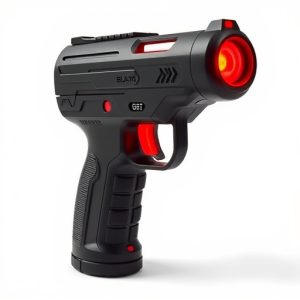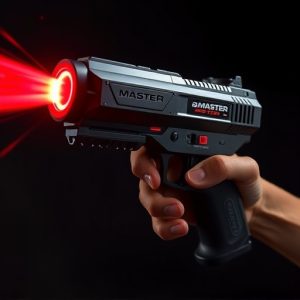Master Blaster Stun Gun Laws: State-by-State Civilian Ownership Requirements
Understanding civilian Taser (or master blaster stun gun) ownership in the U.S. requires exploring s…….
Understanding civilian Taser (or master blaster stun gun) ownership in the U.S. requires exploring state-by-state laws, as federal regulations leave room for varying restrictions on who can buy, possess, and carry these powerful self-defense tools. While some states allow unrestricted possession, others mandate licenses or even training certificates, highlighting the need for prospective owners to stay informed about local rules to avoid legal issues.
“Unraveling the legal landscape of civilian Taser ownership, this comprehensive guide explores state-by-state regulations regarding the acquisition and possession of a master blaster stun gun. From understanding the device’s classification to navigating intricate permit systems, we delve into the key differences between jurisdiction and state laws.
We break down requirements in prominent states like California, Texas, and New York, shedding light on age restrictions, licensing types, and waiting periods. Furthermore, we examine legal defenses against misuse charges and predict future trends shaped by technological advancements and safety concerns.”
- Understanding Civilian Taser Ownership: Legal Framework
- – Overview of stun guns and their classification
- – Jurisdiction vs. state laws: Who regulates civilian stun gun ownership?
- State-by-State Requirements for Owning a Master Blaster Stun Gun
Understanding Civilian Taser Ownership: Legal Framework
Understanding civilian taser ownership involves navigating a complex web of state laws, which vary widely across the United States. In general, owning a master blaster stun gun, or any type of Taser, is not illegal at the federal level but is subject to strict regulations at the state and local levels. These laws dictate who can purchase, possess, and carry such devices, often requiring permits or special licensing for civilian use.
The legal framework surrounding Tasers aims to balance personal safety and self-defense rights with public safety concerns. Many states have specific provisions banning the sale of stun guns to certain individuals—for example, those with a history of violence, felons, or individuals under a protective order. Some states also impose restrictions on where and how these devices can be carried, further emphasizing the need for responsible ownership and use.
– Overview of stun guns and their classification
Stun guns, also known as electroshock weapons or master blasters, are non-lethal self-defense devices that utilize an electric current to temporarily incapacitate a target. They fire two small probes connected to wires, which deliver a powerful electrical pulse, causing muscle contractions and disorientation. This disruption can enable the user to escape or subdue an attacker. Stun guns are classified as either hand-held or body-worn, with varying voltage levels and power sources.
In terms of legality, stun guns fall under different categories based on their design and purpose. Some states allow civilian ownership of low-voltage stun guns without a permit, while higher-voltage models often require licensing or registration. These devices are categorized based on their electric output, with lower voltage models (typically 100,000-250,000 volts) considered less harmful and more accessible. Conversely, higher voltage stun guns (over 500,000 volts) are generally restricted to law enforcement and have stricter ownership regulations due to their increased potential for harm.
– Jurisdiction vs. state laws: Who regulates civilian stun gun ownership?
In the realm of civilian master blaster stun gun ownership, a key distinction lies between jurisdiction and state laws. While federal laws in the United States generally do not regulate the possession of stun guns (often referred to as tasers), individual states have the authority to set their own rules and regulations. This means that what is legal in one state might not be permitted in another, creating a patchwork of guidelines across the country. State laws often delve into specifics such as permit requirements, age restrictions, and prohibited areas for stun gun carry.
Understanding these variations is crucial for those considering owning a master blaster stun gun for self-defense or other purposes. Navigating the legal landscape requires staying informed about one’s state’s specific regulations. Failure to comply with local laws can result in severe consequences, including fines and potential criminal charges. Therefore, it’s essential to consult official sources and legal experts to ensure adherence to the law, especially as stun gun ownership continues to be a growing trend in today’s self-defense market.
State-by-State Requirements for Owning a Master Blaster Stun Gun
In the United States, the ownership of a master blaster stun gun varies significantly from state to state, with each having its own set of regulations and restrictions. Some states allow citizens to own stun guns without a permit, while others mandate specific licenses or registration for their possession. The requirements often include age restrictions, background checks, and proof of training or certification.
For instance, Texas allows qualified individuals to carry a stun gun without a license, whereas California requires individuals to obtain a permit from the local law enforcement agency. New York, on the other hand, mandates that stun guns be registered with the state and that owners have completed an approved training course. Understanding these state-by-state requirements is crucial for anyone considering owning a master blaster stun gun to ensure compliance with local laws and avoid any legal repercussions.
In conclusion, navigating the legal landscape of civilian master blaster stun gun ownership requires a thorough understanding of both federal jurisdiction and state-specific regulations. While some states allow certain individuals to own these devices without extensive restrictions, others have stringent requirements. Understanding these variations is crucial for ensuring compliance with local laws and exercising your rights responsibly. Always remember to check your state’s specific guidelines before considering the acquisition of a master blaster stun gun.


